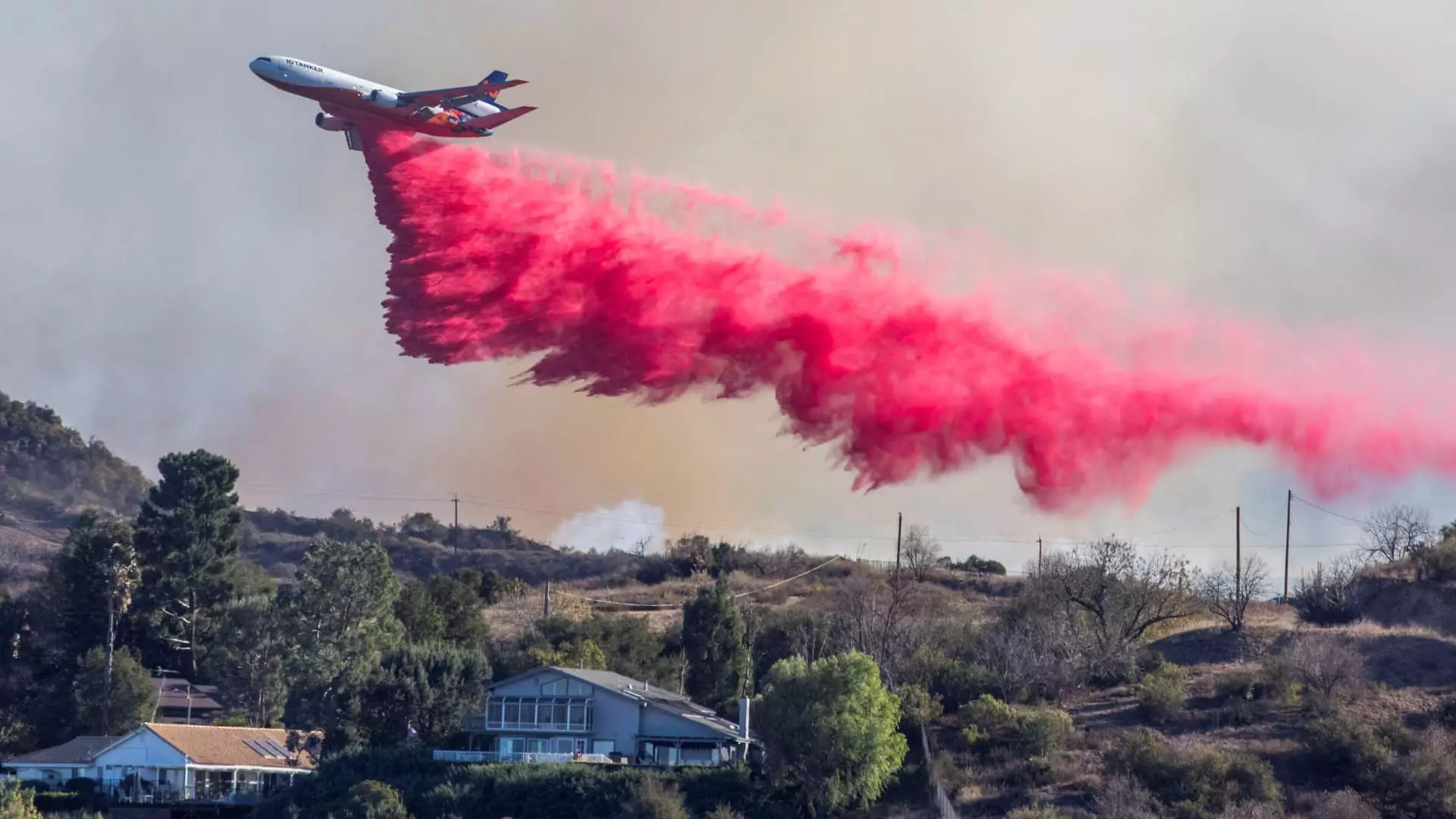The escalating threat of wildfires—particularly in states like California—has drawn significant attention towards the aerial firefighting industry. As seen earlier this month when ferocious fires devastated parts of Los Angeles, the urgency for effective response mechanisms has never been more apparent. Contrary to expectations, this month marked a surge in fire-related incidents during what is typically deemed the off-season for such calamities. This raises questions not only about the preparedness of firefighting services but also about the availability of necessary resources to combat such devastating blazes.
Hurricanes winds fueled these blazes, toppling entire communities, underscoring the unpredictability and intensity of modern wildfires. The statistics are staggering: the recent wildfire events consumed over 37,000 acres, leading to immense property damage and loss of lives. Predictions from the United Nations suggest that fire events are set to become increasingly frequent due to the evolving climate conditions, signaling an urgent need for the aerial firefighting sector to adapt and scale its operations.
Airborne firefighting strategies have become fundamental in managing wildfire threats, with specialized air tankers and water bombers playing pivotal roles. Operated by both government and private entities, these aerial fleets work alongside firefighters on the ground to implement swift containment measures. The California Department of Forestry and Fire Protection (Cal Fire) has developed a significant inventory of aircraft, yet the reliance on private firms has been growing.
Joel Kerley, the CEO of 10 Tanker Air Carrier, highlights the acute shortage of operational air tankers in actual firefighting instances. His company, which has the capacity to deploy converted DC-10 aircraft, exemplifies the private sector’s crucial role in aerial firefighting. According to Kerley, the complexities involved in effectively tackling wildfires have escalated, necessitating a more robust aviation response system.
The aerial firefighting landscape is further complicated by the lengthy conversion processes to modify commercial aircraft into firefighting tankers. Kevin McCullough from Aero Air notes that transforming a standard jet into a fire bomber can extend up to eighteen months. This indicates a need for proactive planning in order to ensure that sufficient aircraft are available for wildfire response.
In response to the increasing challenges posed by wildfires, companies are recognizing the need to innovate and expand their fleets. Bridger Aerospace’s CEO, Sam Davis, pointed out that his firm has seen record profits, attributed to the prevalent dry conditions that kept aircraft operational well into traditionally off-peak months. This trend suggests a paradigm shift toward maintaining a constant readiness for firefighting regardless of conventional seasonal patterns.
Technological advancements are also on the horizon. The introduction of new aircraft models promises to enhance firefighting capabilities through improved design features, such as better water-drop control and enhanced resistance to the corrosive effects of saltwater. With new orders for the DHC-515 already in place from European countries, firms like De Havilland are poised to address this burgeoning demand effectively.
Aerial firefighting is as much about personnel as it is about equipment. The skill set required to operate these massive machines under stressful conditions necessitates specialized training. Pilots often come from diverse backgrounds, including military and commercial aviation sectors, yet finding staff with the right expertise can be challenging. Companies like 10 Tanker are investing heavily in their training programs to develop highly qualified pilots and mechanics to handle complex aerial operations.
Ground conditions during wildfire incidents are often unfavorable, characterized by rugged terrains and adverse weather conditions, which complicates the mission for aerial teams. The ferocity of the Santa Ana winds recently aggravated fire conditions and sometimes limited aerial operations during critical periods of fighting the fires.
The alarming trends in wildfire occurrences due to climate change signal an urgent need to strategize for the years ahead. As wildfires continue to escalate in scale and frequency, aerial firefighting industries face pressure to enhance their capabilities. The transition to more advanced aircraft, improved tactics, and larger fleets must be prioritized to avert further property loss and save lives in the face of increasingly unpredictable fire seasons.
Investing in better-equipped and more responsive firefighting efforts is essential as wildfires become a more integral and devastating part of the landscape. Without prompt action and innovation, communities threatened by wildfires will remain vulnerable to the catastrophic impacts these natural disasters invariably bring. The time for reevaluation and investment in aerial firefighting is now; otherwise, the flames will keep spreading.

